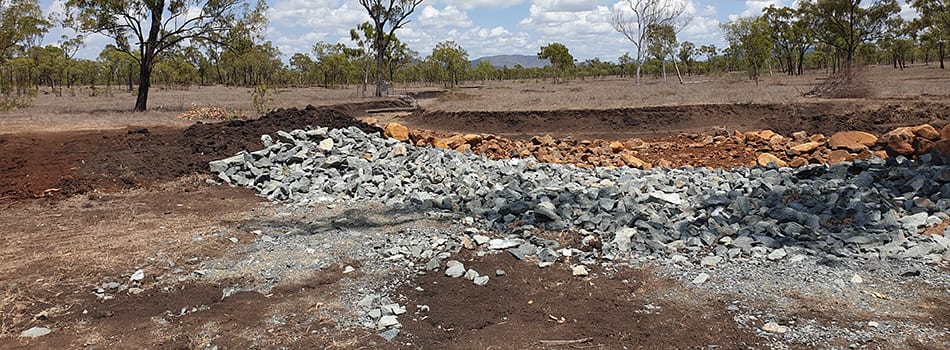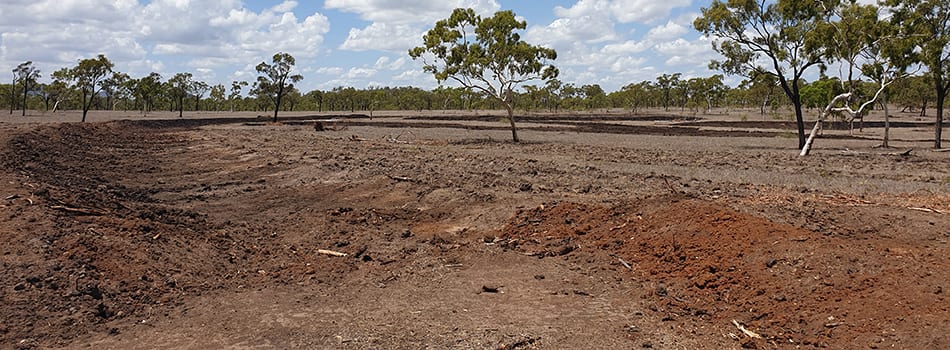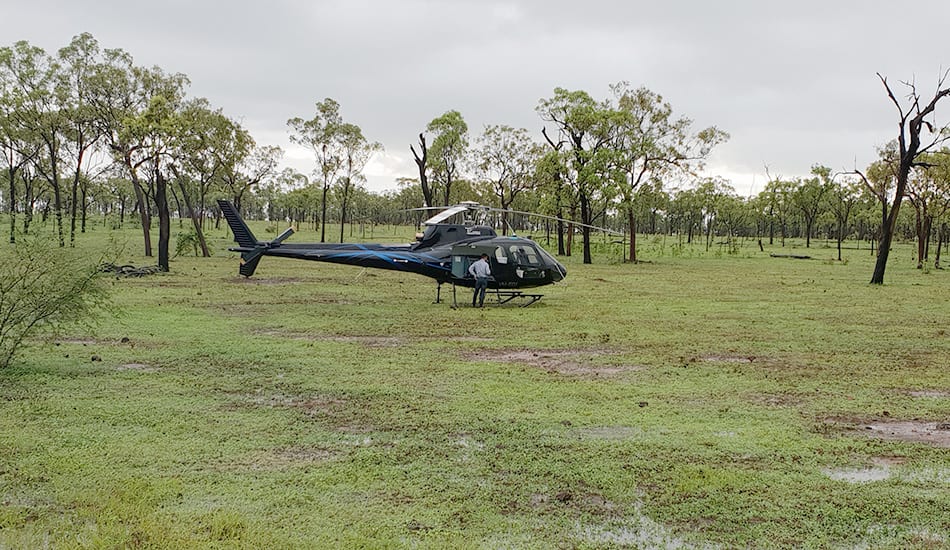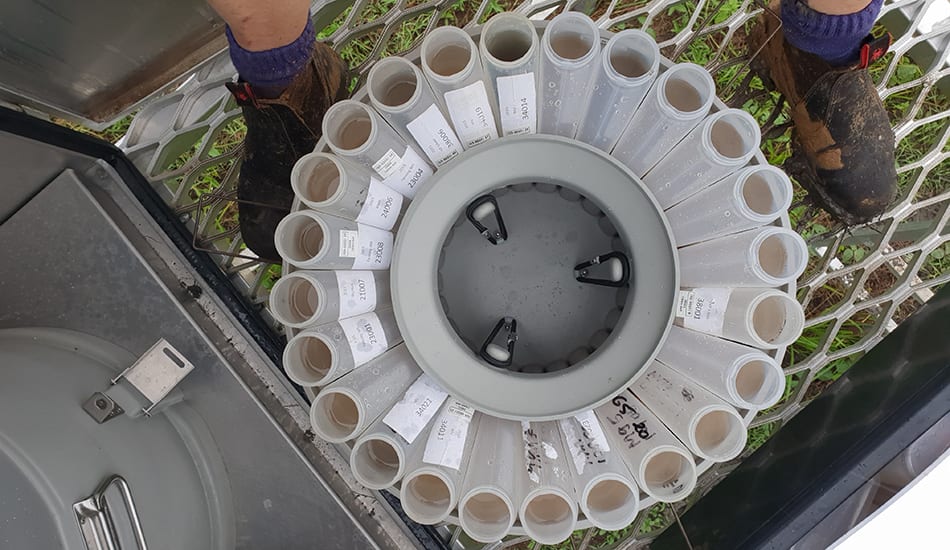
An overview of Monitoring and Evaluation for the LDC project
Work in progress at the Strathbogie Station gully remediation site.
First results at Strathbogie are encouraging
Treatment
Treatment on the gully system at Strathbogie Station included five hillslope flow diversion banks and a small rock revetment near a headcut designed to prevent subsidence.
Exclusion fencing was also installed.
Results
While only one season of post treatment data has been collected from this site, monitoring at Strathbogie for several wet seasons prior to the treatment taking place has provided higher levels of confidence in monitored changes that are detected.
Remediation carried out in 2019 has generated statistical reductions in the total suspended sediment concentrations and total nitrogen levels leaving the system and entering the Great Barrier Reef lagoon.
The site did receive lower than average rainfall in 2019-2020, where it has been monitored that the mechanical treatment applied has successfully prevented runoff from entering the active gully.
The monitoring also shows that the vegetation and landscape are still fragile so ongoing management and monitoring will be important to assess how the treatment site responds to variable rainfall over additional years.
The images show that the treatment applied to the gully system at Strathbogie is preventing the gully from receiving the runoff and sediment that it has in prior years.
Data collected on the adoption and effectiveness of landscape remediation techniques and farm management practices is used in the annual Reef Water quality Protection Plan report card as well as to enhance the catchment models.
This is facilitated through the Paddock to Reef integrated monitoring, modelling and reporting program.
Many of the samples are collected by helicopter in collaboration with Fruition Environmental.
Water quality monitoring samples ready to be transported to the Townsville laboratory.




